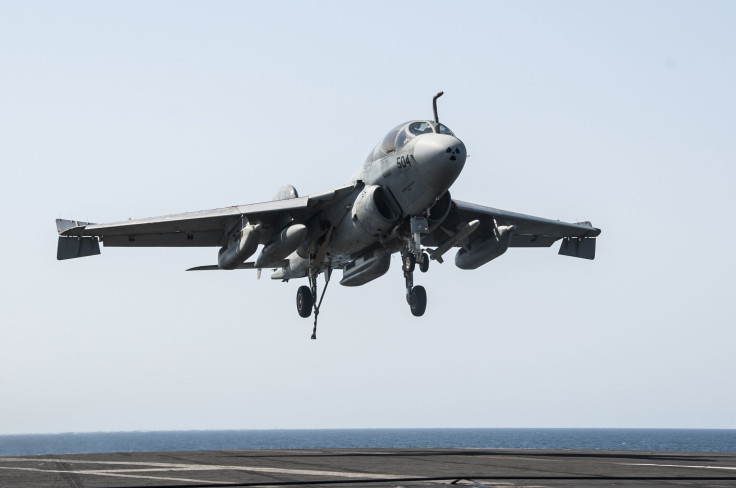U.S. Airstrikes In Syria Against ISIS May Cost As Much As $10 Billion

U.S. forces conducted on Wednesday a second day of bombing against ISIS targets in Syria, in an operation that President Barack Obama expects to last more than three years -- and which may cost as much as $10 billion a year, according to estimates compiled by Foreign Affairs magazine. While the U.S. has recruited allies in the operation, including Saudi Arabia, Jordan, Bahrain and the United Arab Emirates, which are hitting targets on the ground while other partners in the coalition offer support, it will still meet a substantial chunk of the cost.
If anything underlines how high that cost will be, it’s the combat debut of the F-22 Raptor, which costs $68,000 per hour to operate. That does not include the price of its vast array of weapons, such as Sidewinder missiles and small-diameter bombs, coming in at $600,000 and $250,000 each, respectively.
While the White House has refused to comment to how much the operation might cost, early indications suggest that it will go far beyond the $7.5 million per day being spent on strikes against ISIS in Iraq.
"There seems to be lack of strategy from the administration, which is why they have not given a fixed cost for this operation," said Diem Salmon, senior policy analyst for defense budgeting at the conservative-leaning Heritage Foundation in Washington. "The $7.5 million per day cost is on the low side of the estimate and is likely to increase as the U.S. expand their operation against ISIS in Iraq and Syria."
Obama has suggested the operation might come in at around $5 billion in total. To put that in context, the air campaign on Kosovo and Serbia from March to June 1999 cost around $2.5 billion; Libya between March and October 2011 cost $1.1 billion.
But according to Salmon, the costs involved are not just those for the aircraft and weapons. "They are now deploying a division headquarters, which is also going to to drastically increase the cost. There are potentially 500 people in a division HQ," Salmon said, with all the attendant support needs. Then there are the maintenance costs of servicing each aircraft involved in the operation.
The current operation in Syria is being funded from the Overseas Contingency Operations budget, which is used primarily for funding operations in Afghanistan. The White House wanted that budget reduced by about $20 billion to $58.6 billion, but lawmakers decided to keep it at the current level in the temporary budget they passed last week.
While the general defense budget is slowly being trimmed over a number of years, mostly because of looming sequestration, the involvement of the U.S. military in Syria is likely to change that trend when negotiations for the 2016 budget begin. While sequestration forces the Pentagon to make cuts across the board, the threat of ISIS is likely to bring bipartisan support in Congress for revisiting those cuts at least partially.
But aside from the use of the F-22 in strikes alongside other jets, 47 Tomahawk missiles were fired from two ships, the USS Arleigh Burke in the Red Sea and the USS Philippine Sea in the Persian Gulf, at a cost of $1.59 million each. That totals around $74 million for one day and does not include the cost of having both ships in the region.
In addition, the aircraft carrier USS George H.W. Bush, also in the Persian Gulf, is launching F-18s to assist in attacks against the Islamic State. The aircraft have hourly flying costs of $24,400, far lower than the F-15E fighter-bombers flown from a military base in the region, at a cost of $41,921 per hour.
Also involved in the campaign are F-16s and Predator drones, which cost $22,514 and $3,697 respectively per hour of flight. The drones are likely being flown from Incirlik Air Base in eastern Turkey, but other drone bases exist further afield in Ethiopia, Qatar and the United Arab Emirates. Then there is the cost of the air-refueling tankers needed to give all those planes, except for the drones which do not need refueling, the reach to get to Syria and back.
While fighter-bombers and Tomahawks have done most of the damage, hitting fixed ISIS targets in and around Raqqa and Aleppo, B-1 bombers have also taken part in the strikes, costing around $32,000 per hour to operate. Yet to join the fight, but confirmed on the way, is the A-10 Thunderbolt, a 40 year-old, low flying and highly accurate aircraft, expected to arrive in the area in October,. Flying one of them for one hour will set the military back $17,716.
© Copyright IBTimes 2025. All rights reserved.






















